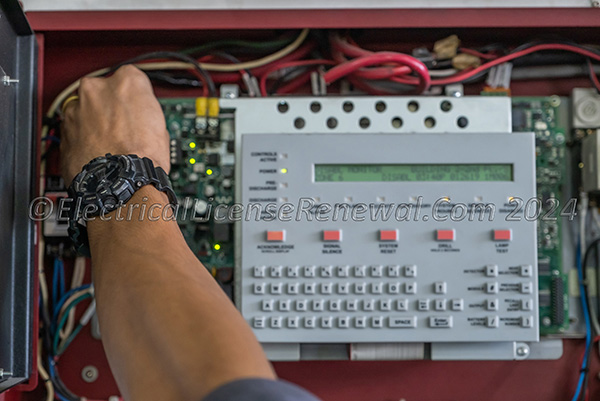Regular Maintenance Protocols.

Regular maintenance in accordance with NFPA 72 Section 14.5 and NFPA 731 Section 10.6 is crucial for ensuring the reliability and effectiveness of fire and security alarm systems. Maintenance protocols involve routine inspections, testing, and servicing of all system components to identify and rectify any issues before they lead to false alarms or system failures.
NFPA 72 Section 14.5.1 states that system equipment shall be maintained in accordance with the manufacturer’s published instructions.
Manufacturer’s instructions must be referred to when verifying key aspects of maintenance protocols include checking the functionality of sensors, ensuring that control panels are operating correctly, and verifying the power supply, including both primary and secondary sources. For smoke detectors, maintenance can involve cleaning the sensors to remove dust and debris that could interfere with their operation. For heat detectors, it involves verifying that they are still capable of detecting temperature changes accurately.
Regular testing of notification appliances, such as horns, bells, and strobe lights, ensures that they can effectively alert occupants in an emergency. This includes checking the sound levels of audible alarms and the brightness and visibility of visual alarms.
Maintenance protocols also involve checking the integrity of wiring and connections. Loose or corroded connections can cause intermittent faults and false alarms. Ensuring that all connections are secure, and that wiring is properly insulated and protected helps maintain the system's reliability.
Documentation and record-keeping in accordance with Section 14.6 of NFPA 72 are important components of maintenance protocols. Detailed records of all maintenance activities, including inspections, tests, and repairs, should be maintained. This documentation helps track the system's performance over time and ensures compliance with regulatory requirements.
NFPA 72 Section 14.6.2 addresses maintenance, inspection, and testing records and requires the following:
14.6.2.1 Records shall be retained until the next test and for 1 year thereafter.
14.6.2.2 For systems with restorable fixed-temperature, spot-type heat detectors tested over multiple years, records shall be retained for the 5 years of testing and for 1 year thereafter.
14.6.2.3 The records shall be on a medium that will survive the retention period. Paper or electronic media shall be permitted.
14.6.2.4 A record of all inspections, testing, and maintenance shall be provided in accordance with 7.6.6
Regular maintenance not only helps prevent false alarms but also extends the life of the alarm system and ensures it is ready to perform in an emergency. By adhering to comprehensive maintenance protocols, installers and maintenance personnel can ensure the continuous reliability and effectiveness of fire and security alarm systems.